



Charting growth in a post-pandemic era
share on
Digital commerce has made its home in the new world, and it isn’t about to leave anytime soon. Digital commerce took off during the pandemic as lockdowns became the new way of life forcing both businesses and consumers across demographics to embrace digital. This then provided an alternative to traditional purchasing habits raising digital commerce’s influence on consumers’ lives.
However, as the physical world makes its comeback through easing of pandemic restrictions, many companies now have the challenge to create a holistic omni-channel experience. Moreover, macroeconomic conditions such as ongoing supply chain disruptions and rising inflation are also leading to many businesses re-evaluating their goals and digital commerce roadmaps.
Given these macroeconomic headwinds, many businesses are looking for expert advice on how to adapt their digital commerce business model and pivot in the face of challenges while continuing to scale, and are seeking new, tech-centred solutions to help them through this time.
To support businesses seeking growth, Meta partnered with Boston Consulting Group (BCG) to produce a whitepaper synthesising learnings and insights from digital commerce leaders across Asia Pacific.
This report identifies four digital commerce archetypes, based on two key qualifying questions:
- Does customer engagement happen predominantly online or offline?
- Does the company have ownership of its products and services?
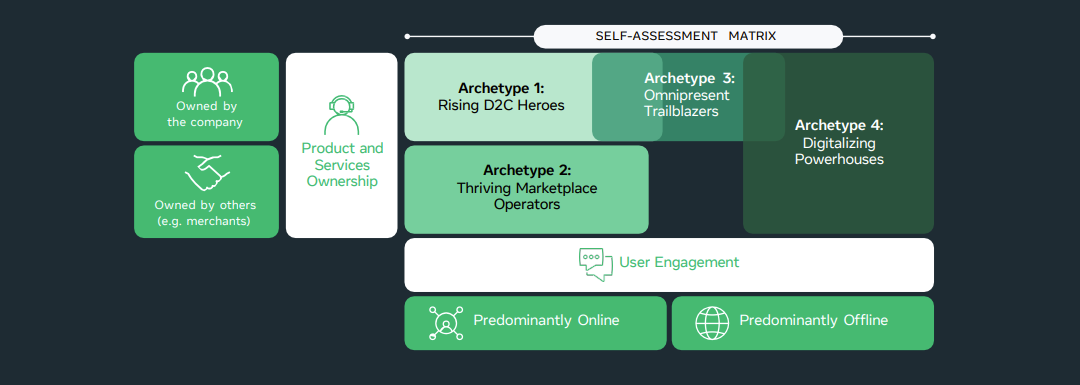
For each of the four archetypes, the report identifies a unique growth roadmap business leaders can use as a blueprint to evaluate their investment decisions.
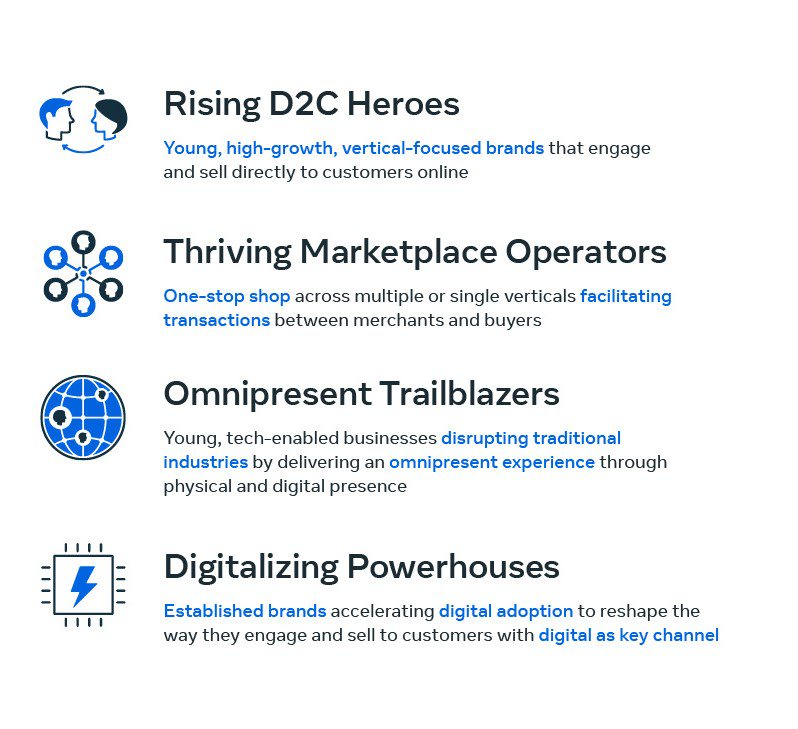
We speak to Karen Teo, VP APAC, Meta; Dhruv Vohra, managing director SEA, Meta and Rohit Gulati, managing director and partner, Boston Consulting Group on the future of digital commerce and brands in this post-pandemic era.
MARKETING-INTERACTIVE: You work with a wide range of clients on their digital commerce needs. What are some of the trends and opportunities that are top of mind for them right now?
Teo: During the pandemic we saw seismic shifts in consumer behaviour that drove exponential rates of digital commerce growth. While people have returned to some offline shopping behaviours, online remains a core component of the path to purchase and nearly all consumer purchases involve a digital commerce component. At the same time, the continued impacts of macroeconomic headwinds and uncertainty have most leaders focused on driving efficiencies and return.
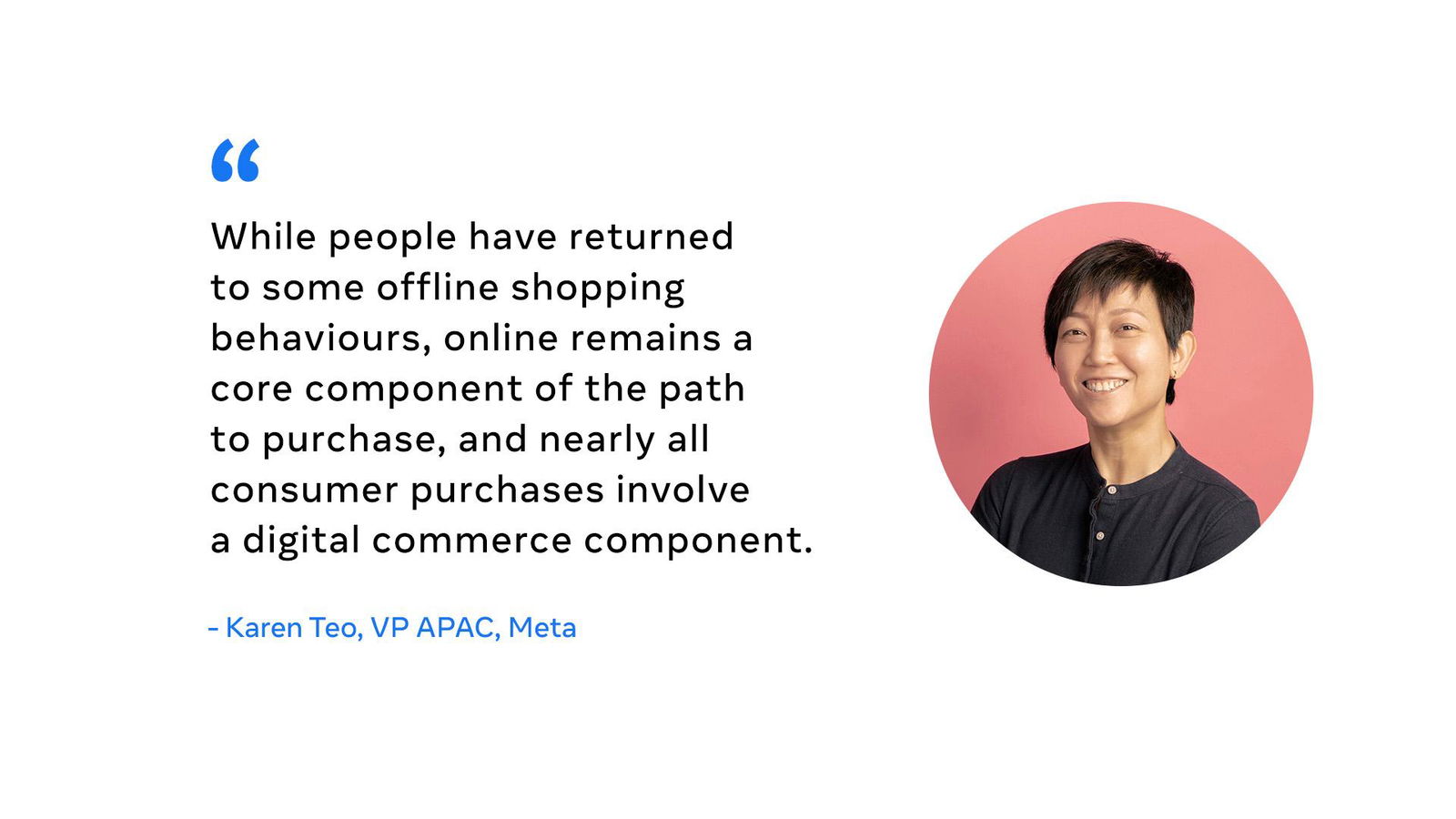
Gulati: In the near term, there is an increasing focus on managing costs to improve margins. Further, with the return of the offline economy, the outsized gains that digital commerce saw during the pandemic aren’t sustaining in the near term – hence putting pressure on the sizeable investments many players made (at least in the immediate term). There is a bit of manoeuvring that a lot of businesses are trying to do to ensure they deliver the near term while staying on course for the long term as the external environment clears up.
Secondly, businesses are shifting from building digital transformation fundamentals to delivering “what’s next” in terms of the customer experience. They are looking at emerging trends to make the experience more engaging (e.g. conversational commerce, shoppertainment), more immersive (e.g. metaverse), and more personalised. To deliver this, they are also trying to build key critical enablers (e.g. digital infrastructure and data capabilities) and exploring ways to build direct customer engagement to prepare for a cookie-less world.
Vohra: Across every type of company, business leaders are thinking “commerce-first” and trying to figure out what stage of evolution they’re at. The real opportunity post-pandemic is that consumer purchase cycles are a combination of offline and online, so it’s about figuring out how to engage customers at each of these stages.
MARKETING-INTERACTIVE: What do you think organisations should prioritise as they look to navigate and adapt to the changing ecommerce landscape?
Vohra: It’s important that businesses find value for every dollar they spend – this means investing in resilient measurement infrastructure with the correct attribution mode and having confidence that the right data is being used to find the audience in the right place at the right time. For example, at Meta we are working really hard to help clients manage spend efficiently and reduce leakage of marketing investment dollars through the access to powerful AI.
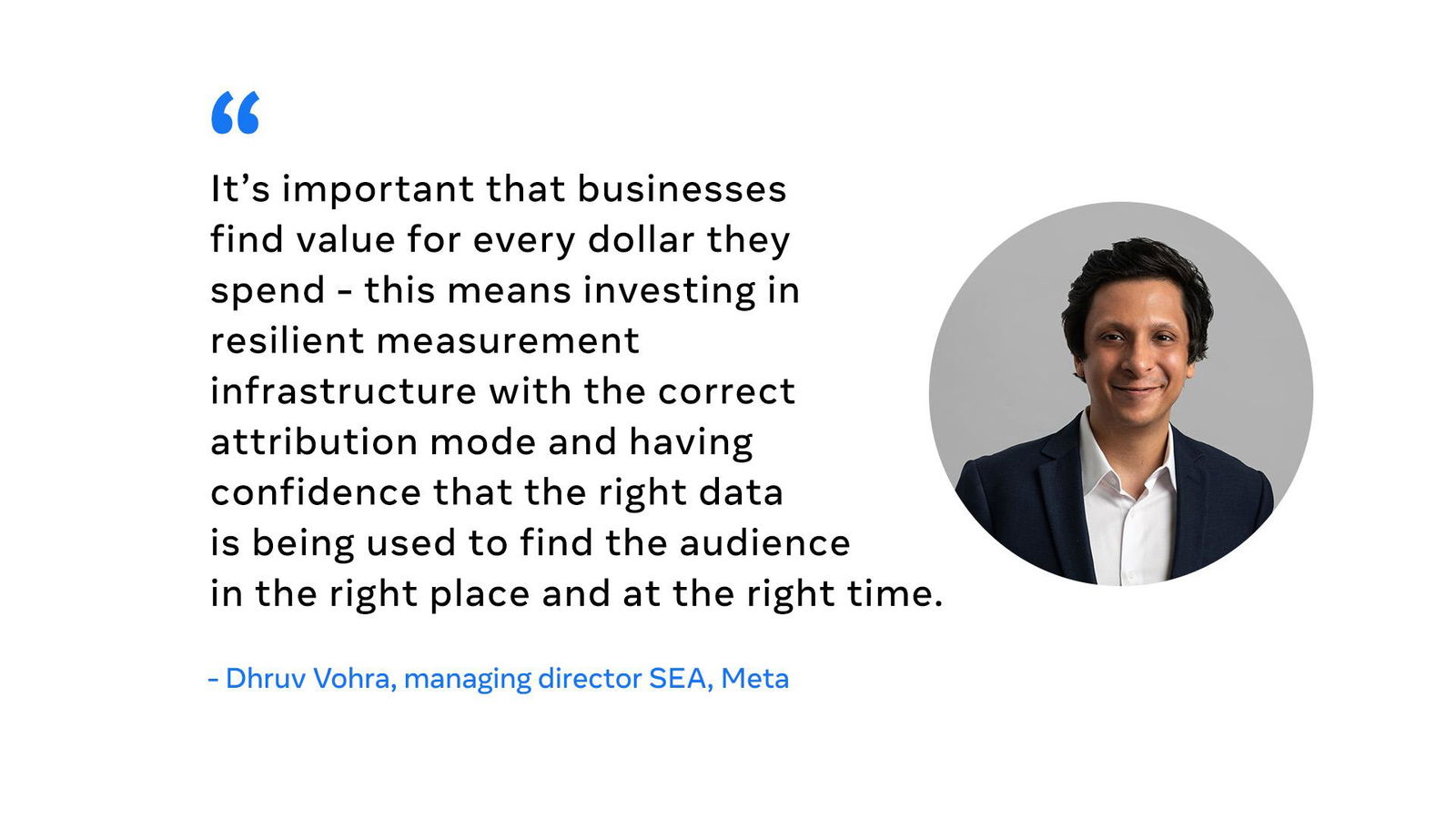
Teo: All organisations should prioritise based on lifecycle stage and business archetype. From our research, one key focus area that underpins all the different business archetypes is technology adoption as a critical enabler to scale. For instance, Rising D2C heroes should adopt solutions for messaging, measurements and customer service which become critical as these brands scale.
Gulati: There is no one clear roadmap to growth across businesses in this dynamic digital commerce landscape. As a first step, it is imperative for businesses to identify which archetype they belong to, understand which specific areas to focus on, assess where they are in their growth journey and hence build capabilities based on where they need to go.
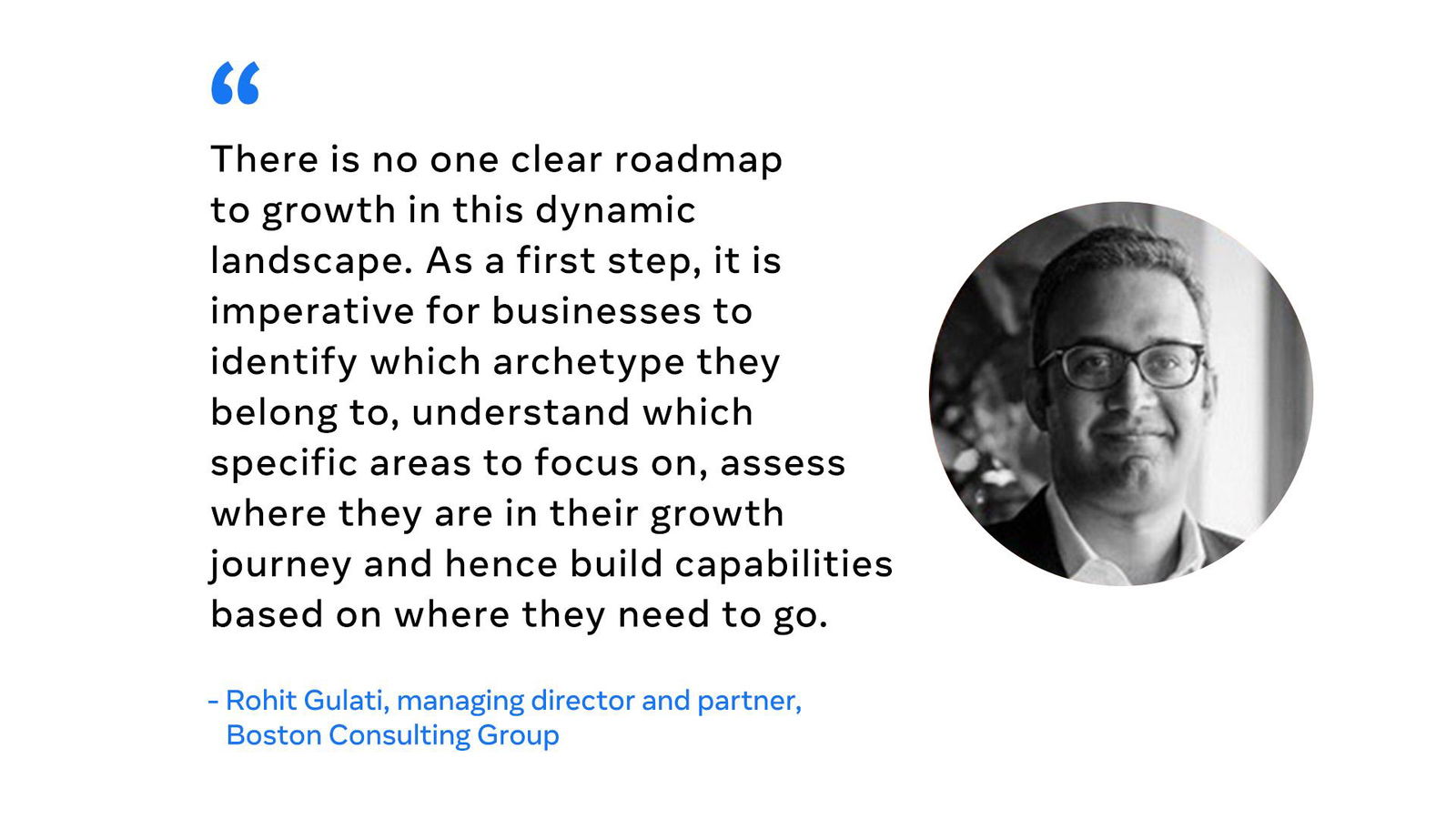
So, for example, if you are in the D2C business (referred to as “Rising D2C Heroes” in the report), an important driver of success is achieving Product Market Fit. This could mean starting with fewer SKUs or smaller drops, getting feedback from customers, spending time to refine it before scaling it further.
Beyond levers that are archetype-specific, businesses can explore other initiatives to navigate short term headwinds coming from external macro challenges. For example, to become more ROI driven by leveraging data to evaluate campaign effectiveness and using it as a foundation to drive investment decisions, while continuing to invest in brand equity. It could also mean being smarter about how to drive new user acquisition and ensuring sufficient balance on customer retention.
While many players often push hard to acquire new customers early in the journey (often at the expense of high burn), in the current environment, you need to be choiceful of how you acquire customers; while continuing to drive customer lifetime value – through for example, cross-sell, upsell, subscription models etc. to drive better unit economics.
MARKETING-INTERACTIVE: How should business leaders use this paper to help them?
Teo: What I love about this paper is that it helps businesses to take the step from insights to action. By distilling insights from best-in-class players of each archetype, business leaders can use the custom growth roadmaps to create a blueprint for their organisation in achieving future growth.
Gulati: We believe that the co-written report “Digital Commerce in the Post Pandemic Era” by BCG and Meta reflects the challenges in today’s environment and can give directions to business leaders in how to pivot and focus on the right priorities. Picking their digital commerce archetype allows businesses to get a tailored set of actions depending on their maturity.
This article was written in collaboration with Meta. Download the whitepaper to chart your unique digital commerce growth roadmap.
share on
Free newsletter
Get the daily lowdown on Asia's top marketing stories.
We break down the big and messy topics of the day so you're updated on the most important developments in Asia's marketing development – for free.
subscribe now open in new window
